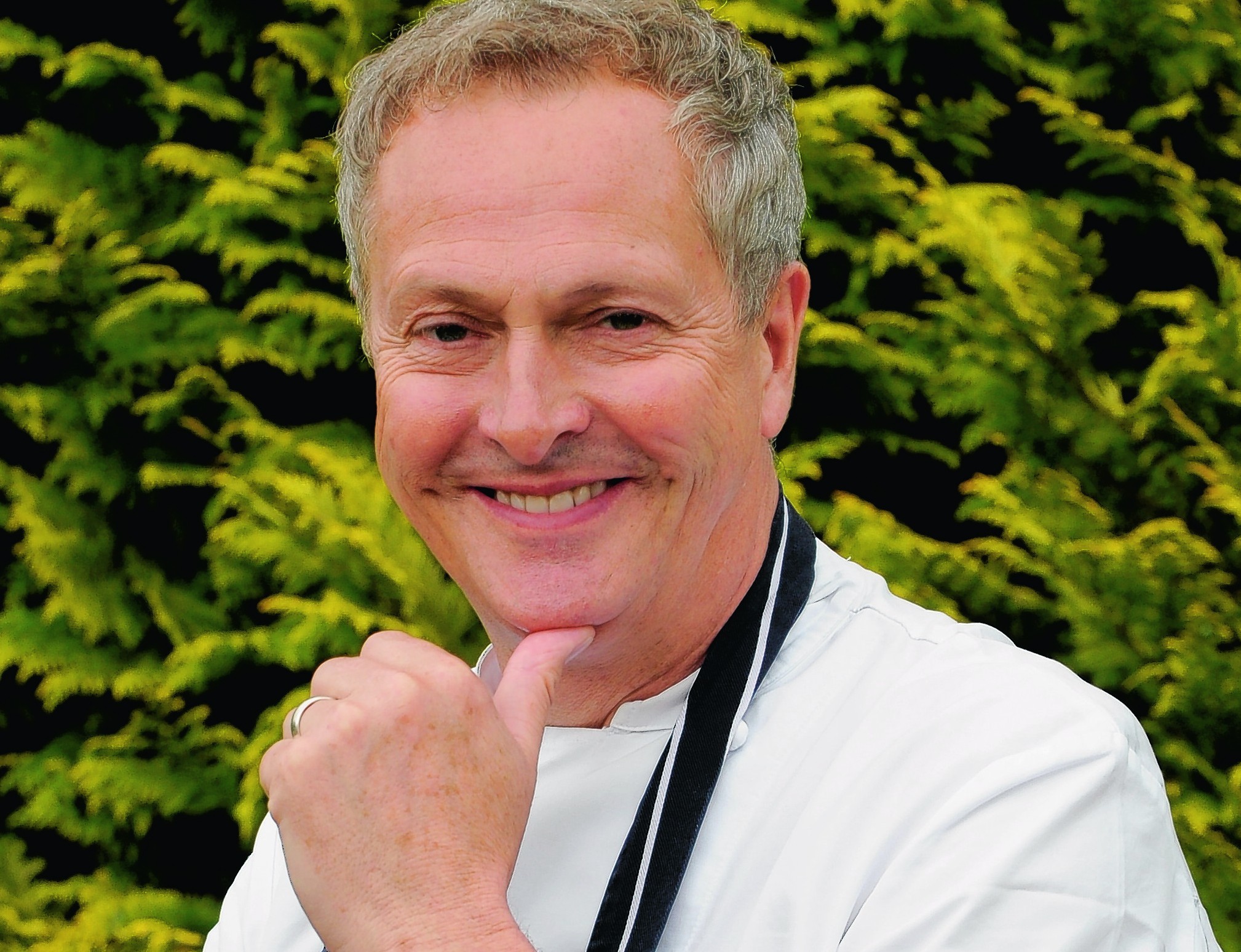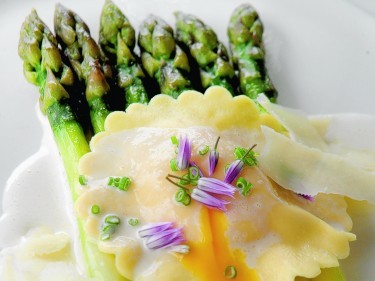Nick Nairn recently joined The Press and Journal’s team of food writers and will be presenting a series of cookery videos over the next few months, shown exclusively on The Press and Journal website.
Each month, Nick will give you seasonal, restaurant-quality dishes that can be recreated at home.
In the first of Nick’s cookery school videos, he takes us through making egg yolk raviolo. Check out our serving suggestion below the video too.
Egg yolk raviolo and asparagus with parmesan cream
Serves 2
For the pasta
200g plain flour
1 whole egg
3 yolks
Semolina flour for dusting/rolling
Knob of butter
Chopped chives
For the filling
2 egg yolks
For the asparagus
225g asparagus, woody ends snapped off
For the parmesan cream
50g grated Parmesan
50ml double cream
To make the pasta, place the flour in a food processor and start whizzing. Add the whole egg and 1 yolk and mix until it resembles fine breadcrumbs. Add the remaining egg yolks one at a time. If the mixture starts to go doughy, stop the machine and add a tblsp of flour. Keep repeating until the mix resembles cous cous. This should take 2–3 minutes.
To check you have the correct consistency, rub the mix between your finger and thumb. If it is sticky you still need to add a little flour. Tip out the dough and form into a ball and knead well for 1 minute. Wrap in cling film and rest it for 20-30 minutes.
For the raviolo, take the rested pasta dough, cut off a quarter and re-wrap the remainder to stop it drying. Roll the piece you’re working on with a rolling pin until 5mm thick. With the pasta machine at its widest setting, pass the dough through the rollers. Repeat, folding over the dough after each pass until the pasta is silky smooth and shiny.
Reduce the settings one at a time, passing the pasta through each time. When you’ve run the pasta through the thinnest setting, it’s ready to use. Don’t let it dry (cover with cling film if necessary).
Lightly dust a work surface with semolina flour. Lay out the dough and cut out 2 circles (15cm) with a cutter. Then place an egg yolk on one of the circles. Dip a finger cold water and run it around the edge of the pasta circle around the yolk. Place another circle carefully over the egg yolk and lightly press the edges together around the yolk without breaking it.
Make sure there’s no air trapped or they will break open while cooking. Dust with semolina. Now use a slightly smaller fluted circular cutter (a jam tart cutter) to cut out a neat raviolo. Discard the edges. Repeat this process. You need 1 raviolo for each person. Cook immediately in just simmering salted water for 3-4 mins then remove with a slotted spoon or spider and shake off the water, drizzle with butter.
Make the Parmesan cream by bringing the cream gently to the boil, then remove from the heat and add the grated cheese and stir until it melts.
For the asparagus, shave the stems using a potato peeler, leaving the spears intact. Blanch in salted water for 3-4 mins, drain, season and serve with a raviolo on top, Parmesan shavings, chives (and chive flowers if you want), and a little Parmesan cream drizzled.

